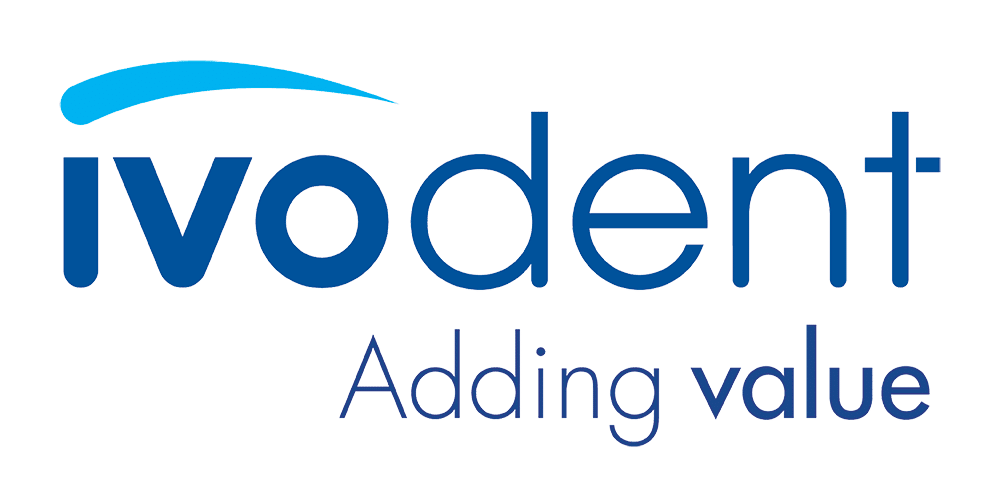

The MDP-based adhesive functional monomer found in various Ivoclar products has been specially formulated to ensure high bond strengths to various substrates.
MDP consists of a long-chain methacrylate with a phosphoric acid group.
The phosphoric acid group enables a stable chemical bond to zirconium oxide and base metal alloys. Consequently, using an additional bonding agent or primer is not required for permanent bonding to these restoration substrates.
In addition, phosphoric acid reacts with the calcium ions of the dental hard tissues and, in the process, produces a bond with the tooth structure. The need for a separate adhesive is eliminated.
Which Ivoclar products contain 10MDP?
1. Tetric N-Bond Universal – The Universal adhesive for bonding direct and indirect restorations. The acidic monomer MDP bonds to the calcium within the hydroxy apatite to form insoluble calcium salts, facilitating mechanical blockage and sealing in the dentin tubules. This helps prevent the movement of fluid in the dentin as well as post-operative sensitivity associated with that movement.

2. Monobond N – The universal primer for conditioning of all indirect restorations. The acid monomer MDP improves bond strength to zirconia and metal surfaces. The MDP bonds to zirconia on its free phosphate group and to resin cements on its methacrylate end.
Monobond N is distinguished by an innovative combination of three different functional adhesive monomers: phosphoric acid methacrylate, silane methacrylate and sulfide methacrylate. This combination enables the universal primer to bond to zirconia, glass-ceramics and metal alloys.

3. Multilink Speed - A clinically proven self-adhesive resin cement with MDP within its formulation for the permanent seating of high-strength restorations made of zirconia and metal, both on natural teeth and implant abutments. Given its self-curing, self-adhesive properties, Multilink Speed offers peace of mind and security, especially when cementing opaque restorations.

Zirconia (zirconium oxide)-based ceramics have become a very popular type of all-ceramic restorations. Zirconia-based ceramics have a high strength and, therefore, restorations can be cemented with traditional cements or bonded with resin cements.
Zirconia crowns and bridges with adequate thickness, good retention and fit, do not need bonding (do not rely on high bond strengths) and can be cemented with conventional cements.
If greater retention to tooth structure with minimal marginal leakage is required, bonded cementation with resin cements is recommended. Adhesion to tooth structure and to the ceramic restoration combines good marginal sealing and strengthening of the tooth-restoration complex to minimize marginal leakage and tooth fractures.
Conventional cementation with glass-ionomer cement (GIC), resin-modified glass-ionomer cement (RMGIC) or self-adhesive resin cement - If your cement does not contain the MDP (as in the case with GICs, RMGIs, some self-adhesive resin cements and all adhesive resin cements), a MDP primer needs to be applied to the fitting surface of the restoration.
If your cement already contains MDP within its formulation (as in the case with Multilink Speed), a MDP primer is not required on the fitting surface of your restoration.
Self-adhesive resin cements are the best choice for zirconia-based ceramic restorations, when the restoration does not require the highest retention.
Self-adhesive resin cements are less technique sensitive than bonding with adhesive resin cements and offer more retention and better marginal sealing of tooth structure than the traditional glass ionomer cements. No separate bonding agent is necessary, reducing much time and effort, and cleanup is easy with self-adhesive resin cements.
When more retention is needed due to a short clinical crown or an over tapered preparation, adhesive resin cements, may be used to bond the restoration. Adhesive resin cements do not contain MDP within its formulation and therefore a primer to the restoration surface and a bonding agent is to be applied to the tooth surface.
Zirconia cementation with Multilink Speed – your self-adhesive resin cement:
Air-particle abrasion (sandblasting) of the zirconia restoration before cementation - 30-60ų alumina particles for 5 seconds. This is done by your dental laboratory after fabrication of the restoration.
1. CLEANING: During try-in the restoration becomes contaminated with phospholipids, saliva and blood. The intaglio of the crown therefor has to be cleaned with a special ceramic cleaner after try-in. Ivoclean is the universal extra-oral cleaning agent for the decontamination of the fitting surfaces of restorations after try-in.
2. APPLY CEMENT: Apply cement into restoration and seat on tooth. No zirconia primer is required when using Multilink Speed, as it already contains the acidic monomer MDP within the cement formulation. No bonding agent is required on the tooth surface as the acidic monomer MDP within the cement formulation bonds to the calcium within the hydroxy apatite to form insoluble calcium salts facilitating mechanical blockage and sealing in the dentin tubules.
Zirconia cementation with Variolink Esthetic DC – your dual curing esthetic adhesive resin cement:
Air-particle abrasion (sandblasting) of the zirconia restoration before cementation - 30-60ų alumina particles for 5 seconds. This is done by your dental laboratory after fabrication of the restoration.
1. CLEANING: During try-in the restoration becomes contaminated with phospholipids, saliva and blood. The intaglio of the crown therefor has to be cleaned with a special ceramic cleaner after try-in. Ivoclean the universal extra-oral cleaning paste for the decontamination of the fitting surfaces of restorations after try-in.
2. CERAMIC PRIMER: The adhesive resin cement Variolink Esthetic does not contain the acid monomer MDP within its formulation and therefor a ceramic primer containing MDP needs to be applied to the fitting surface of your restoration. Monobond N the universal ceramic primer with MDP is used.
3. TOOTH SURFACE: All adhesive resin cements require the tooth surface to be bonded with a separate bonding agent. Tetric N-Bond Universal is used on the tooth surface, dispersed with air and cured.
4. APPLY CEMENT: Apply Variolink Esthetic DC resin cement into restoration and seat on tooth.